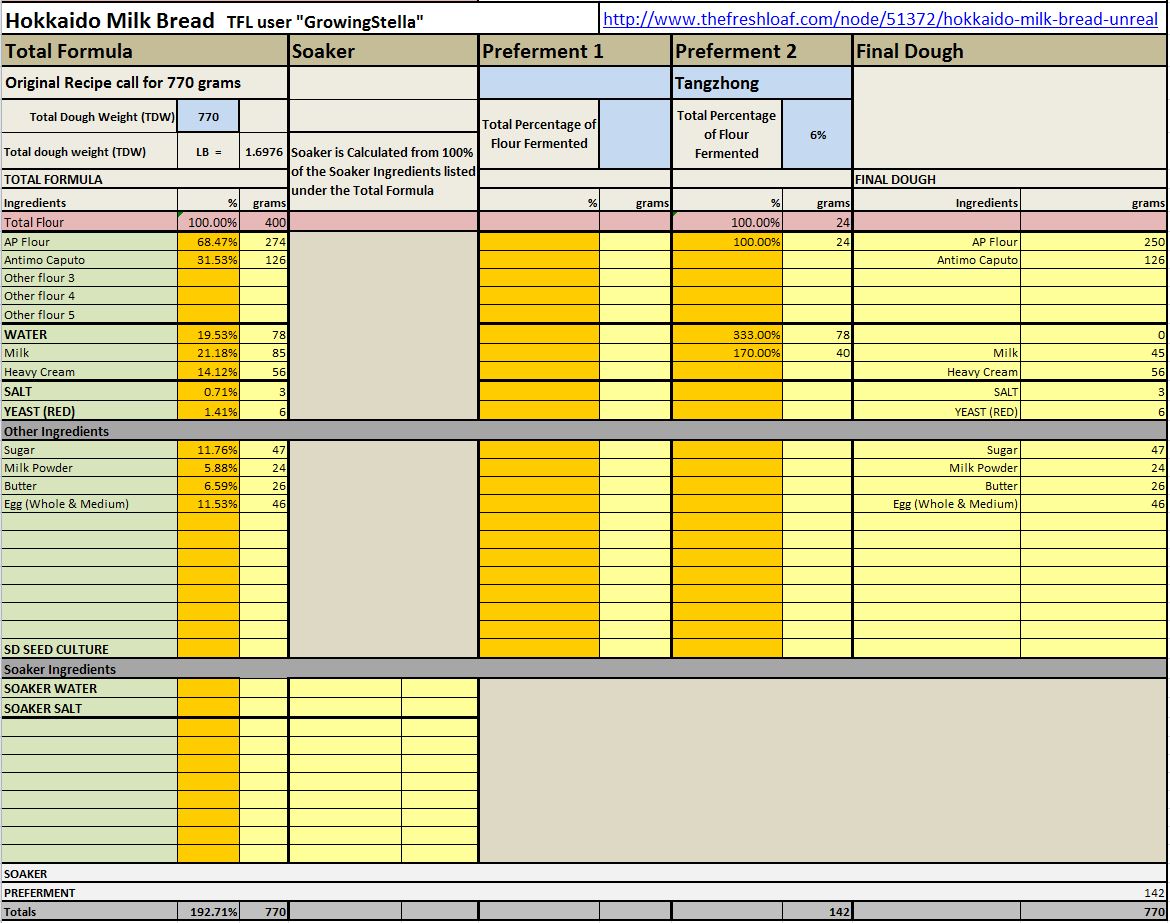When I lived in Japan, nearly every morning I’d go to a kissaten and have a cup of strong, sweet hot coffee and a slice of “butter-jam toast,” a thick slice of toasted bread slathered in..........yes, butter and jam! The bread was not only sliced thick, it had a different texture and taste from American bread.
There are several Asian markets accessible to me, but I’d like to try and make the bread. If any of you could point to a recipe, or even suggest search engine terms (“Asian bread” didn’t pull up the expected results. I’m notoriously bad at google searches though), I’d be very grateful.
Doh. I just searched for “Japanese bread,” not “Asian bread,” and came up with about a dozen hits. Can I just apologize and say “never mind?” I’d rather not, because y’all might have a a recipe that didn’t make to google (they’re becoming extremely snobby over there IMHO), or! If you’ve made it, you could share some tips.
sorry again, and thanks for your patience with this newbie!
http://www.thefreshloaf.com/node/51372/hokkaido-milk-bread-unreal
I followed her directions without deviating and the results were great.
The instructions call for a tangzhong, which was easy to do and interesting.
Note; the bread contained 12% sugar so I used SAF Gold yeast. If you have a choice, use Gold. But I think the author, “growingstella” used SAF Red.
Good Luck...
Dan
Thanks, that bread looks so inviting that I can nearly smell the aroma via wi-fi!
i found this word in almost all of the recipes for Japanese milk bread, but no clear instructions on how to use it, except to mix it first, then add it to the main dough. Does it need to ferment, like a poolish, or is it just mixed then added to the bulk ferment?
P.S. Tangzhong is definitely not a Japanese word! I would guess Mandarin or Cantonese?
Joel:
Tangzhong is Mandarin Chinese. I made Japanese style sandwich bread with tangzhong (water roux) years ago and the following is the formula I used:
http://www.thefreshloaf.com/node/11745/recipe-japanese-style-sandwich-bread-water-roux-starter-sponge
Yippee
No pre-ferment needed with the Tangzhong in the recipe I suggested. The description in the link I sent does a good job of explaining. If you follow her directions closely you should have good success. The bread rises very high, is soft and fluffy, and moist. It makes very good toast, too.
Another bread that we like is the Hawaiian Style Portuguese Sweet Bread. It uses a Tangzhong with potato flakes instead of flour. As the name implies it is very sweet. The instructions in the link below are thorough. Can’t miss if you stick with Del’s instructions. I like the recipe so much, I wouldn’t consider tweaking it. And that’s rare for me ;-)
http://www.thefreshloaf.com/comment/117287#comment-117287
Dan
Yeah, I did some research and figured it out, after my Skruitol pill wore off --. Thanks for the link! It looks delicious. It seems you’ve had a bit of experience with tangzhong. How does it differ from a biga or poolish in the final loaf? I only know that it is used to make Japanese sandwich bread (that’s my next project!). Is it the tangzhong that adds the unique texture? I have to admit, after I read a few of the recipes (and to feed my shopaholic shopaholic tendencies), I bought a nifty loaf pan with a lid; hopefully I can achieve that iconic, perfectly square shape.
sorry, but since you seem to care, one more question (because I just took another dose of Skruitol), if you don’t mind. Do you know the ratios. I could of course figure that out by looking at the recipes, averaging the collective ingredients’ weights and figure the ratios out myself, but, well, see above --.
Thanks again for the info and recipe!
Sweet mother of Methuselah! In my last post, I said it looked delicious; what I meant to say was that your description sounded delicious. I hadn’t read the recipe yet. It still sounds delicious, but I’m gonna have to figure out his ratios (isn’t flour always at 100%? He says 60% of one flour, and 39% of the other. A) that only adds up to 99%, and B) 60% and 39% of what? It seems that author, while well intentioned, doesn’t understand that in baker’s ratios, flour is always 100%. I wish more baker/writers would include the ratios and though, so kudos for that! And also for using metric! Metric is soooooooo much easier for math- challenged people like me (there are 3 kinds of people in the world - those who understand math and those who don’t).
I think I get it, though, and, like I said, it sounds delicious. It’s second on my list of projects!
The percentages in the original recipe doesn’t show 100% because of rounding errors.